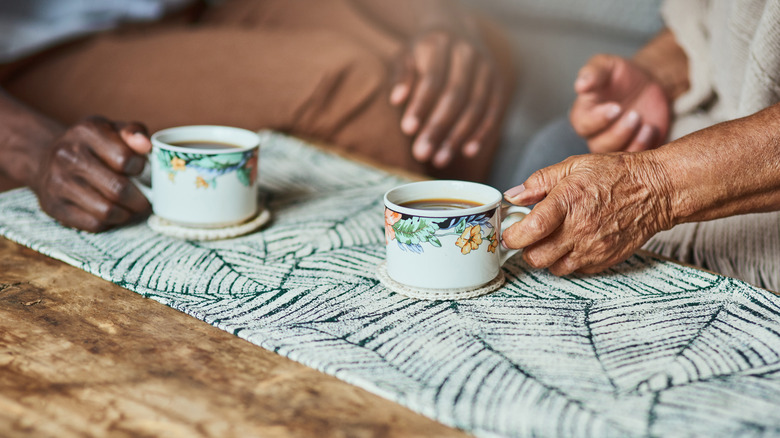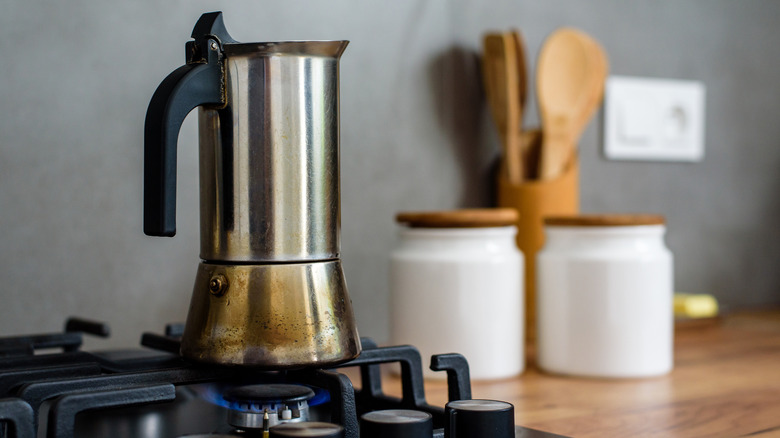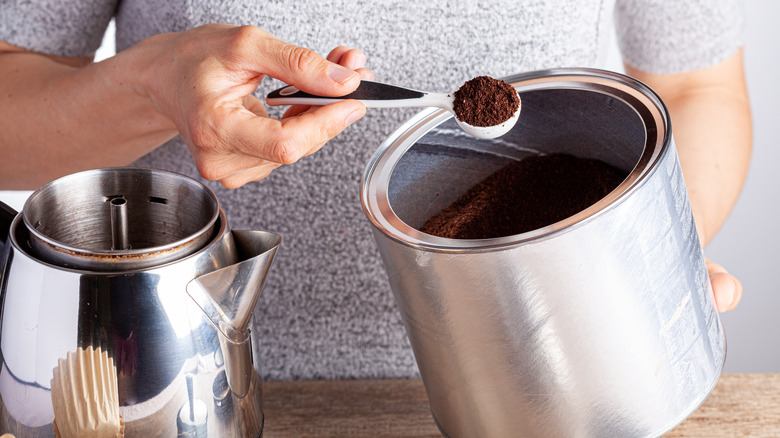All The Benefits Of Brewing Coffee How Grandma Did
With its invention dating back to the early 19th century, the percolator is one of the oldest coffee machines still in use today. (Although the first cup of coffee came about decades earlier around A.D. 850.) While you might think a coffee maker this old doesn't have a place in a modern kitchens, think again. There's a reason this coffee machine remained so popular for over a century. So, if you're curious to give it a try, here are all the benefits of brewing coffee just like Grandma did.
For starters, because of its unique brewing process, a percolator can produce an extra bold cup of coffee. From stovetop models to electric, every type of percolator is different, but most follow a similar brewing pattern. First, you have to fill up the bottom of the percolator with water. Next, place some coarsely coffee ground in the perforated bowl on the top of the pot. This bowl is connected to the bottom of the pot by a long spout. As the water heats up, it will shoot up through the spout, slowly mixing in with the coffee grounds, and then fall back down through the perforations into the bottom of the pot again. This cycle continues for five to ten minutes until a pot of coffee is hot and ready to drink. Because the water is seamlessly falling through the grounds on a repeated cycle — unlike with drip coffee which passes through only once — it extracts maximum flavor from the beans.
Some other benefits of using this timeless invention
Most electric percolators have a light that will switch when it's finished brewing on so you will know when the coffee is ready. While the robust flavor of coffee brewed using a percolator is big reason to love this timeless kitchen gadget, it's far from the only one. Another benefit of brewing coffee with a percolator is its portability. Unlike traditional drip brewers, percolators are small and easy to transport. The stovetop varieties require no electricity to work at all, just a heat source, so they're a handy gadget for camping trips or similar excursions. The electric versions are even convenient too, as they also come in all shapes and sizes and can be used for any sort of function. Plus, these machines don't require any filters or papers at all, so they are also more environmentally friendly.
Now, some coffee connoisseurs might see a similarity between this brewing method and a moka pot. While these coffee machines are similar, they work a little differently. A moka pot uses steam pressure to shoot water through coffee grounds, while a percolator relies on water pressure. These subtle differences means each of their coffees taste slightly different, with some saying moka pot coffee tastes more rich and percolators more well-rounded, so don't get these two confused.
How to perfect the brewing process with a percolator
While a percolator's unique brewing method can make for more flavorful cups, it can also lead to overly bitter ones. The water used to brew the coffee has to be really hot in order to shoot through the spout, and even tiny miscalculations in temperature or duration of brewing can lead to a unsavory brew. While this might leave some who have previously used a percolator with a bad taste in their mouth — it's one reason why people made the switch to drip coffee machines in the late 20th century — there are simple ways to prevent this from happening.
Especially with stovetop percolators, be wary of the temperature of the water and the length of time you choose to brew. Try to keep the temperature of water from exceeding 205 degrees Fahrenheit. Any higher and the water will boil and scald the grounds, leaving the coffee with a burnt taste. Pay attention to how fresh your water is too, because your tap water also affects the taste of your coffee.
With the invention of electric percolators, you can usually avoid any bitterness problems entirely as the process is all done for you, making for better, well-rounded cups of coffee. Put in the extra time to wait for that coffee to percolate just like grandma did and see the results for yourself. (And if you want to be a fair judge of the end product, here are 4 steps of tasting coffee like a professional.)


